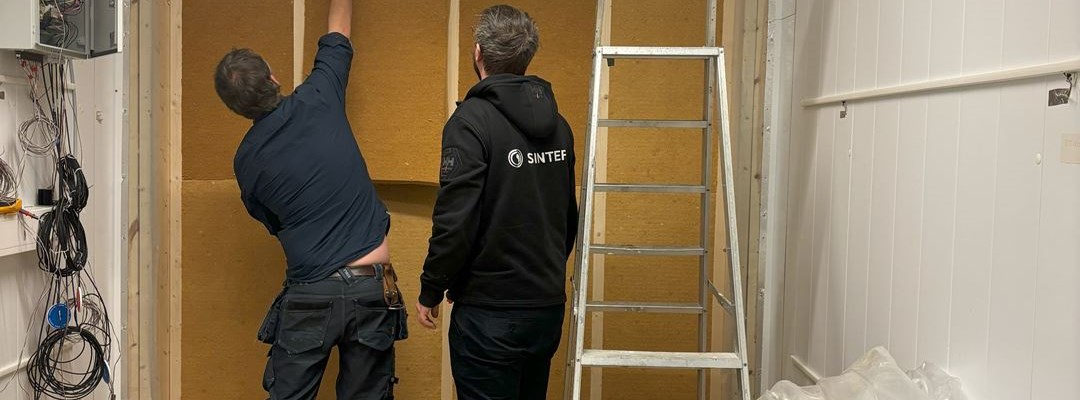
- 4. June 2025
Valuable EU Collaboration Drives Building Materials Innovation
"Many companies are probably not aware of the opportunities available through EU-funded R&D projects"
says Inger Gamme from building materials manufacturer Hunton.
Heating buildings account for a significant share of climate emissions and high energy use. Therefore, the EU is investing heavily in improving building energy efficiency by financing R&D projects where researchers and manufacturers collaborate to develop new and smarter products.
SINTEF and Hunton have collaborated on several previous projects. Now both are partners in the EU project EASI ZERo, which is developing various building materials aimed at climate-friendly energy upgrades.
Developing More Efficient Wood Fiber Insulation
"For Hunton, this is a unique opportunity to further develop our products,"says Senior Engineer Inger Gamme.
Hunton's wood fiber insulation boards will be enhanced with better moisture and resistance and insulation performance.
Researcher Alessandro Nocente and colleagues have examined the materials in SINTEF's laboratories.
Initially, the insulation material underwent various tests. After some modifications, it demonstrated improved insulation capacity. The panels were then installed in a full-scale wall construction in SINTEF's Test Cell laboratory. There, outdoor and indoor temperatures, moisture levels, and heat loss are monitored in controlled, realistic conditions.
The researchers also assessed how insulation performance changes over time. "In a climate chamber, the materials are exposed to high and low temperatures and varying humidity. The exposure occurs in cycles that simulate aging at an accelerated pace," Nocente explains.
Additionally, the researchers examined how easy the materials are to install and dismantle, and whether they are suitable for reuse or recycling. The installer was therefore filmed when the panels were mounted in the Test Cell laboratory.
They also studied how the new material properties affect the production process.
“So far, things are looking promising. A few tests remain, but it’s likely the improvements will be implemented during the year”
says Inger Gamme.
Construction Industry Largely Unaware of EU Opportunities
Hunton has previously participated in IPN projects (innovation projects in business) funded by the Research Council. However, this is their first EU project, and Gamme believes many in the construction industry are unaware of the opportunities.
By participating in the project, 70 percent of the costs for product development are financed by the EU.
"In addition, it's useful to be part of a project with shared milestones, it helps move things forward more quickly than if we were working alone.”
“The budgeting and reporting requirements are a bit more extensive than we’re used to in national projects, but it’s absolutely worth the effort. We’ll definitely consider joining more EU projects in the future,”Gamme says.
Helping the Whole Industry Become More Profitable and Sustainable
SINTEF has participated in and led many EU projects. Their experience shows that these projects offer great opportunities for both private companies and public institutions that want to develop their products and services.
“The knowledge generated shouldn’t just benefit the project partners. The whole industry stands to gain when we build more sustainably,” says Nocente.
When the project is completed, a report on good solutions for installation and dismantling will be available to the entire industry. This makes the transition to a circular construction industry easier.
About the EU Project EASI ZERo
EASI ZERo is developing products and façade systems for the energy renovation of existing buildings, with a focus on low carbon emissions.
Since the systems must work across Europe, the project also involves mapping relevant standards and regulations in different countries. Market potential analysis and marketing are included as well.
Project partners include materials manufacturers and research institutions. The research teams contribute expert knowledge, testing, and access to advanced laboratories.
SINTEF is responsible for testing and documenting the solutions developed—materials, products, and systems.
This article was originally written and published by SINTEF. Read the original Norwegian article here
Banner photo: Additional insulation is good energy efficiency. Here, Hunton Nativo® Wood Fiber Insulation Boards are being installed in the Test Cell at SINTEF, a partner in the EASI ZERo project. The panels are tested under realistic conditions to evaluate their performance in actual use

